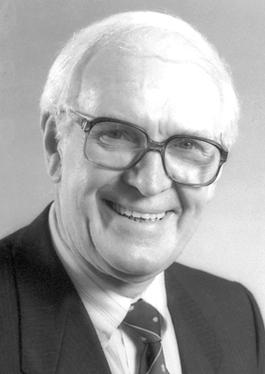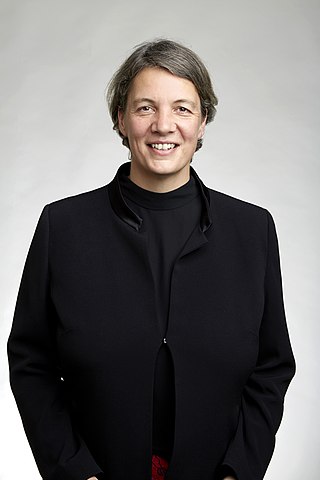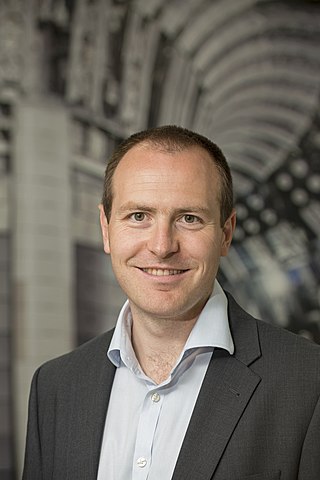
The University of Liverpool is a public research university in Liverpool, England. Founded in 1881 as University College Liverpool, Victoria University, it received Royal Charter by King Edward VII in 1903 attaining the decree to award degrees independently. The university withholds and operates assets on the National Heritage List, such as the Liverpool Royal Infirmary, the Ness Botanic Gardens, and the Victoria Gallery & Museum.

Sir James Whyte Black was a Scottish physician and pharmacologist. Together with Gertrude B. Elion and George H. Hitchings, he shared the Nobel Prize for Medicine in 1988 for pioneering strategies for rational drug-design, which, in his case, led to the development of propranolol and cimetidine. Black established a Veterinary Physiology department at the University of Glasgow, where he became interested in the effects of adrenaline on the human heart. He went to work for ICI Pharmaceuticals in 1958 and, while there, developed propranolol, a beta blocker used for the treatment of heart disease. Black was also responsible for the development of cimetidine, an H2 receptor antagonist, a drug used to treat stomach ulcers.

The Royal Society of Edinburgh (RSE) is Scotland's national academy of science and letters. It is a registered charity that operates on a wholly independent and non-partisan basis and provides public benefit throughout Scotland. It was established in 1783. As of 2021, there are around 1,800 Fellows.

The Institute of Mathematics and its Applications (IMA) is the UK's chartered professional body for mathematicians and one of the UK's learned societies for mathematics.
Michael Irwin Jordan is an American scientist, professor at the University of California, Berkeley, research scientist at the Inria Paris, and researcher in machine learning, statistics, and artificial intelligence.

The New York Academy of Sciences (NYAS), originally founded as the Lyceum of Natural History in January 1817, is a prestigious nonprofit professional society that plays a vital role in advancing global scientific research and knowledge. As the fourth-oldest scientific society in the United States, the academy has made significant contributions to the scientific community for over two centuries. Today, it boasts a diverse membership of over 20,000 individuals from 100 countries.

The Royal Society of Victoria (RSV) is the oldest scientific society in Victoria, Australia.

James Wannerton is an English IT professional, artist and writer. He experiences sound to taste synesthesia, including lexical-gustatory synesthesia; i.e. he can "taste" sounds, including words or word sounds.
Sir David Philip Lane is a British immunologist, molecular biologist and cancer researcher. He is currently working in the Department of Microbiology, Tumor and Cell Biology at the Karolinska Institute and is Chairman of Chugai Pharmabody. He is best known for the discovery of p53, one of the most important tumour suppressor genes.

Cheryl Elisabeth Praeger is an Australian mathematician. Praeger received BSc (1969) and MSc degrees from the University of Queensland (1974), and a doctorate from the University of Oxford in 1973 under direction of Peter M. Neumann. She has published widely and has advised 27 PhD students. She is currently Emeritus Professor of Mathematics at the University of Western Australia. She is best known for her works in group theory, algebraic graph theory and combinatorial designs.

Sir David Charles Baulcombe is a British plant scientist and geneticist. As of October 2024 he was Head of Group, Gene Expression, in the Department of Plant Sciences at the University of Cambridge, and the Edward Penley Abraham Royal Society Research Professor and Regius Professor of Botany Emeritus at Cambridge. He held the Regius botany chair in that department from 2007 to 2020.

Synesthesia or synaesthesia is a perceptual phenomenon in which stimulation of one sensory or cognitive pathway leads to involuntary experiences in a second sensory or cognitive pathway. People with synesthesia may experience colors when listening to music, see shapes when smelling certain scents, or perceive tastes when looking at words. People who report a lifelong history of such experiences are known as synesthetes. Awareness of synesthetic perceptions varies from person to person with the perception of synesthesia differing based on an individual's unique life experiences and the specific type of synesthesia that they have. In one common form of synesthesia, known as grapheme–color synesthesia or color–graphemic synesthesia, letters or numbers are perceived as inherently colored. In spatial-sequence, or number form synesthesia, numbers, months of the year, or days of the week elicit precise locations in space, or may appear as a three-dimensional map. Synesthetic associations can occur in any combination and any number of senses or cognitive pathways.

The Marine Biological Association of the United Kingdom (MBA) is a learned society with a scientific laboratory that undertakes research in marine biology. The organisation was founded in 1884 and has been based in Plymouth since the Citadel Hill Laboratory was opened on 30 June 1888.

Sir Konstantin Sergeevich Novoselov is a Russian–British physicist. His work on graphene with Andre Geim earned them the Nobel Prize in Physics in 2010. Novoselov is a professor at the Centre for Advanced 2D Materials, National University of Singapore and is also the Langworthy Professor of the School of Physics and Astronomy at the University of Manchester.

The Sainsbury Laboratory Cambridge University is an independently funded British research institute based at the Cambridge University Botanic Garden. Its aim is to elucidate the regulatory systems underlying plant growth and plant development.

Michelle Yvonne Simmons is an Australian quantum physicist, recognised for her foundational contributions to the field of atomic electronics.

Shrikanth Narayanan is an Indian-American Professor at the University of Southern California. He is an interdisciplinary engineer–scientist with a focus on human-centered signal processing and machine intelligence with speech and spoken language processing at its core. A researcher, educator, and inventor, and patent holder, he has worked in research areas including in computational speech science, speech and language technologies, audio, music and multimedia engineering, human sensing and imaging technologies, emotions research and affective computing, behavioral signal processing, and computational media intelligence.
The European Society for Cognitive Psychology (ESCoP) is one of the primary societies for scientific psychology in Europe. Members of ESCoP specialize in research in Cognitive Psychology and related disciplines, studying topics such as working memory, attention, language processing, bilingualism, perception, and many more. ESCoP was an associate member of the European Federation of Psychologists' Associations (EFPA), and organized joint symposia with the Association for Psychological Science (APS).

Sir Ian Trevelyan ChapmanFRS is a British physicist who is the chief executive of the United Kingdom Atomic Energy Authority (UKAEA).















